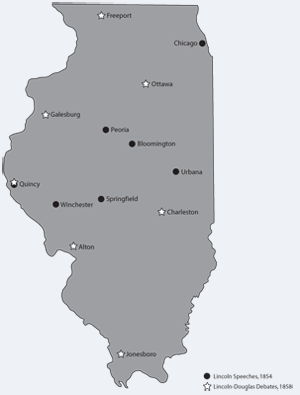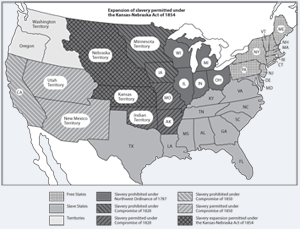|
February 12, 1809
Abraham Lincoln was born.
December 1, 1834
Lincoln took his seat in Illinois State Legislature.
March 1, 1837
Lincoln was admitted to the Illinois Bar.
March 4, 1847-March 3, 1849
Lincoln served in United States House of Representatives.
July 6, 1854
The Republican Party was formed.
May 30, 1854
The Kansas-Nebraska Act became law. The Kansas-Nebraska Act, one of the most explosive congressional statutes of American history, repealed the prohibition on slavery in that section of the Louisiana Territory north of the 36° 30' parallel — a restriction on the spread of slavery agreed upon by North and South in the Missouri Compromise of 1820. The Kansas-Nebraska Act, sponsored by the famous Illinois Senator Stephen A. Douglas, inaugurated an incendiary chapter in the slavery debates of the early American Republic. In response to the Kansas-Nebraska Act, Lincoln launched his antislavery campaign. All of his moral and historical arguments opposed any further extension of slavery in the American republic, founded, as he argued, upon the Declaration of Independence. That “all men are created equal,” with the “inalienable right to liberty,” was, for Lincoln, a universal principle that Americans must not ignore.
October 16, 1854
Lincoln delivers the Peoria Speech.
|
Click images to enlarge

Map of Illinois 1854-1858

Map of the United States - Kansas-Nebraska Act 1854
|